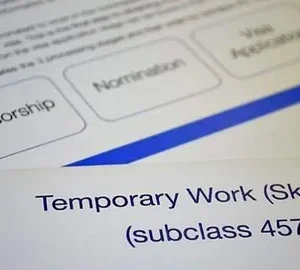JET Programme
The Japan Exchange and Teaching (JET) Programme is one of the most established routes for native/near-native English speakers to live and teach in Japan. Operated through local boards of education (and coordinated nationally), it places participants as Assistant Language Teachers (ALTs) or in Coordinators for International Relations (CIR) roles.
Why JET is popular:
- Stability & reputation: long-running, reliable, backed by local and national government partners.
- Orientation & training: standardized pre-departure and in-country orientations.
- Benefits: many placements provide benefits such as support finding housing, paid training, sometimes partial relocation assistance, and access to Japanese lessons.
- No advanced Japanese required: many ALTs join with little to no Japanese and learn on the job.
Typical compensation: JET salaries vary by contract year and municipality. In many years, starting salaries have been reported in the range of ¥260,000–¥360,000 per month depending on placement (urban vs rural, board of education). That range is often presented as roughly $2,000–$3,000/month depending on exchange rates — which is why the “$3,000/month” figure is sometimes used as an attention-grabbing estimate for city placements.
(Please verify current salary bands on the JET site above — municipal boards set exact pay.)
University Partnerships for English Teaching
Universities in Japan (national, public, and private) sometimes partner with overseas institutions or run direct recruitment for language support staff, graduate teaching assistants, or work-study style positions. These roles vary more than JET placements but can include:
- Part-time teaching while studying (for graduate students)
- Full-time language instructor roles with university contracts
- Work-study fellowships that bundle teaching with research or TA responsibilities
Advantages of university partnerships:
- Professional development: opportunities to engage in academic settings (seminars, research).
- Paid language lessons & campus housing: many universities offer subsidized housing and Japanese courses.
- Pathways to further study: some applicants convert a contract into postgraduate study opportunities.
University-paid roles sometimes pay comparably to JET or a bit higher if the role expects specialized teaching or research assistance; city-located national universities may provide higher allowances.
How the visa and pay typically work (keyword H2)
Most English teachers arrive on a work visa arranged with the employer or local board of education. Here’s a high-level view:
- Common visa categories:
- Instructor — often used by boards of education for public school ALTs.
- Specialist in Humanities/International Services — used for language teachers employed by private companies or universities.
- (Other categories exist; MOFA has official visa details.)
- Salary & benefits:
- Monthly salaries commonly range from a baseline allowance (e.g., ¥200k–¥360k) with extras: housing stipend, relocation support, or transportation allowances.
- “$3,000/month” is a reasonable headline for well-compensated city placements after conversions and allowances, but rural placements may pay less while offering lower cost of living and better housing support.
- Work-study angle:
- Programs that label themselves “work-study” usually combine teaching duties with formal training, required workshops, or coursework (language classes, pedagogy seminars) provided at no cost.
Important: Visa issuance and exact salary figures change over time. Always cross-check the current visa category and salary with the employer and the Ministry of Foreign Affairs visa guidelines.
Table: Quick comparison — JET vs University Partnerships vs Private Schools
| Feature | JET Programme | University Partnerships | Private Schools / Eikaiwa |
|---|---|---|---|
| Typical salary (monthly, approximate) | ¥260k–¥360k (varies) | ¥250k–¥400k (varies by role) | ¥200k–¥350k (part-time to full-time) |
| Visa type | Instructor | Specialist in Humanities / University contract | Specialist in Humanities / Working visa |
| Japanese required? | No (orientation + lessons provided) | Often not required; beneficial | Not required for many roles |
| Training & language lessons | Standardized orientation + in-service | Often provided; depends on university | Varies; chains may offer some training |
| Accommodation support | Some municipal help, sometimes assistance finding housing | Often campus housing/subsidy | Rarely included; some chains help employees |
| Best for | Early-career grads, cultural immersion | Academically-inclined, long-term study path | Flexible schedules, quick hiring |
| Stability & reputation | High (government-backed) | Medium to high (institution-dependent) | Variable; company-dependent |
(Numbers are indicative and reflect typical ranges known up to mid-2024. Confirm exact figures with each program/employer.)
Who can apply and eligibility checklist (short, scannable)
Most programs look for:
- A university degree (bachelor’s or higher) — many require a degree in any discipline.
- Native or near-native English ability; teaching experience is helpful but not always required.
- Clean criminal record and ability to obtain a visa.
- For JET specifically: citizenship eligibility varies by nationality — check JET official site for your country’s checklist.
Quick pre-application checklist:
- Copy of degree certificate and transcript
- Police/background check (some countries require it for visa)
- CV and cover letter tailored to teaching in Japan
- Reference letters (2 recommended)
- A short teaching demonstration plan (for some roles)
- Passport valid for more than 6 months
Day-in-the-life: what to expect (conversational)
- Morning: commute to a local public school, co-teach an English class with a Japanese teacher, assist with conversation labs.
- Midday: prep materials, occasional club activities (many schools value extracurricular involvement).
- Afternoon: language exchange with students, paperwork, lesson planning.
- Evening: campus or shared housing; online language lessons or community events; weekends often used for travel.
One of the biggest surprises for many teachers is the community element — you’ll often be invited to local festivals, school events, and dinners. That’s where language learning accelerates.
How to prepare a standout application (list formatting)
Use a checklist and short actionable tips:
- Tailor your CV: highlight cross-cultural experience, any teaching or tutoring, and teamwork skills.
- Write a narrative cover letter: explain why Japan, what you’ll bring to students, and how you’ll contribute to school life. Concrete examples beat vague platitudes.
- Gather references early: supervisors who can vouch for classroom control, communication, or community involvement are ideal.
- Prepare a teaching demo: one interactive 20–30 minute activity shows you can engage learners.
- Study basic Japanese phrases: even if the program doesn’t require Japanese, showing effort in language learning is a strong signal.
- Practice interview questions: expect situational questions like, “How would you engage a shy classroom?” or “Describe a miscommunication and how you handled it.”
- Organize documents for visa: transcripts, diploma, criminal record check, passport scans — keep them in a single folder.
Orientation, training, and language lessons — what’s typical
- Pre-departure orientation: many programs run an online or in-person session that covers cultural basics, teaching methods, and logistics.
- In-country orientation: multi-day or week-long orientation on arrival, introductions to local systems, and basic Japanese language classes.
- Ongoing support: many local boards or universities run teacher development workshops. Expect at least some formal feedback on your teaching.
If you’re looking specifically for paid training + language lessons bundled with your job, focus on:
- JET Programme placements (nationally standardized orientation)
- University contracts that list “Japanese language classes included” or “professional development” in job descriptions
Cost of living and realistic budgeting (short list + note on conversions)
Japan’s cost of living depends heavily on location. Tokyo and other large cities are more expensive than rural areas.
Typical monthly budget example (city placement, indicative):
- Rent (shared or small apartment): ¥60,000–¥120,000
- Utilities & internet: ¥10,000–¥20,000
- Food & transport: ¥30,000–¥60,000
- Misc & leisure: ¥20,000–40,000
If your salary is in the range ¥260k–¥360k per month, it can cover basic needs and allow some saving in lower-cost cities. In big cities, budget carefully.
Currency note: salaries are usually given in yen — convert to USD/EUR at current exchange rate when planning. Exchange rates fluctuate; check a live currency converter before final budgeting.
Application timeline & deadlines — realistic expectations
- JET: annual recruitment cycles for most countries — apply many months before the intended start (often the following spring). Check the official JET site for deadlines for your country.
- University partnerships: hiring windows vary; national universities hire for semester starts, and private institutions may hire year-round.
- Private schools: often ongoing, with seasonal hiring peaks (pre-term).
Practical tip: start preparing 3–6 months ahead of your intended move date; collect documents like a police check early as they can take time.
Common myths and misunderstandings (short list)
- “You must speak Japanese.” Not true — many accepted teachers start with little Japanese. But learning will improve your experience.
- “All programs pay $3,000/month.” Not guaranteed — $3,000 is a headlineable top-of-range for some city placements when benefits and exchange rates align. Expect a range.
- “It’s only for new grads.” No — while many early-career graduates apply, the programs accept a range of ages and backgrounds.
Cultural tips and how to thrive (list)
- Be punctual and reliable — timekeeping is highly valued.
- Be humble and curious — local teachers and communities appreciate cultural respect.
- Join local events — build connections beyond work.
- Ask for feedback — Japanese colleagues often communicate indirectly; asking for explicit feedback helps.
- Get a commuter Suica/PASMO card — it simplifies transport.
Final verdict — is this right for you?
If you want an immersive cultural experience, structured training, the chance to teach without fluent Japanese, and a stable pathway to living in Japan, then JET or university partnerships are among the best routes. Expect a range of pay depending on placement, but the headline “$3,000/month” captures the upper-range city placements with allowances. For the best outcome:
- Apply early
- Prepare a clear, personable application that shows cultural curiosity and teaching potential
- Budget based on city vs rural placement and verify salary before you sign
CTA — What to do next (humanized)
If you’re serious about moving to Japan:
- Visit the JET Programme official site for your country and the Japan Ministry of Foreign Affairs visa pages to confirm visa categories and current requirements.
- Start gathering diplomas, references, and a background check.
- Want help crafting a standout CV, a teaching demo plan, or a tailored cover letter? Tell me your country and degree, and I’ll write them for you — optimized for hiring boards in Japan.
Closing
Moving to Japan to teach English can be a life-changing step: you’ll gain professional skills, friendships, and stories to tell for a lifetime. It’s not purely glamorous — there will be paperwork, cultural bumps, and budgeting choices — but with honest preparation and the right program (JET or university partnership), many people find the balance of pay, training, accommodation support, and language lessons makes it more than worth it.
If you want, I’ll now:
- Draft a ready-to-use CV and cover letter for JET/university placements, or
- Create a teaching demo plan (20–30 minute activity) with materials you can print, or
- Convert the salary ranges into a country-specific budget using current exchange rates (I’ll need permission to run live checks).
Which of those would be most helpful next?





